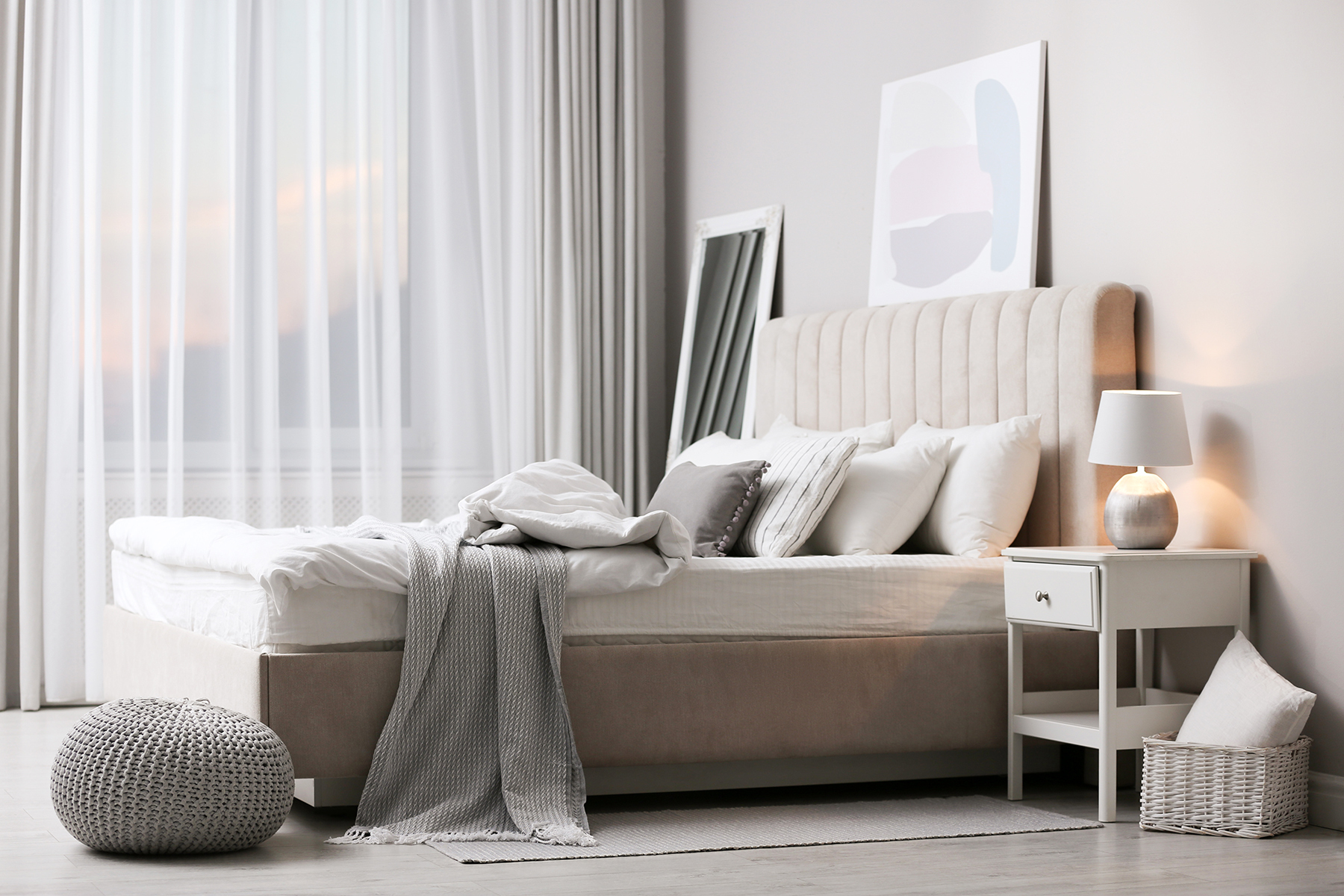Design Guidance
How To Seamlessly Decorate A Beautiful Space

Design is inherently a creative endeavor. As such, rules can become arbitrary and not applicable in all circumstances. However, unless you have a special design theme in mind or an excellent eye for off-kilter interior applications, certain rules will be helpful guides. There are basic design elements that come with standards that won’t impede your creativity, but instead will showcase your unique ideas and not distract from them.
Even if you aren’t a rule follower, you may still want to consider giving the following suggestions for window treatments, rugs, and artworks a try, to help make your decorating process as seamless as possible.
Go High With Your Window Treatments
Windows are in almost every room of the house, bringing in the best lighting of all – natural light. Most people like some sort of window treatment, and that makes sense. The fabric used for curtains can soften a space, add dimension, block out light and nosy neighbors, and bring visual interest to a room. All this to say, when you hang your curtains, make the most of them. Follow these steps to create the illusion that the walls are taller and the windows wider:
– Hang your curtain rod at least 4”-6” above your window casing, if not higher. It’s ideal to hang them halfway between the top of the casing and ceiling, or just go all the way to the ceiling.
– Extend your curtain rod beyond the width of your window so that when the curtains are open, the window isn’t covered.
– Hang curtains to the floor. You may not want them to drag or puddle on the floor, but try to keep them no more than about half an inch above the floor.
– Although typically panels are sold as single panels, you should hang one on both sides of the window.
As a side note, hanging longer shower curtains in your bathroom can add height and drama to the space.
Large Rugs for the Win
Rugs can ground a space, add texture and comfort, and provide the perfect finishing touch in a room. They can also get very expensive as they go up in size, so while it’s tempting to go smaller rather than bigger, consider the following recommendations be-fore purchasing your floor covering.
In the dining room: If you have a round table, then it makes the most sense to use a round rug, a rectangular rug for a rectangular table, and so on. The key is to make sure that even when the chairs are pulled out, they remain on the rug. What you don’t want is to have any chairs or chair legs off the rug, creating an un-even surface underneath.
In the living room: All of the furniture you have centered around the rug should be on it. If the furniture is spread out and the size of the rug would be too small for the entire furniture piece to be placed on top, then try to at least have the front legs of the furniture pieces on the rug. While sitting in the furniture, your feet should be on the rug.
In the bedroom: The same applies for the bedroom in that you want your feet to touch the rug as you get off your bed and walk away. You also want the rug to extend out from the end of the bed. If you want to move it further down so that the bedside tables are not on the rug, that will allow for more length at the end of the bed.
Art Placement THAT Paints a Pretty Picture
Art placement can be tricky. It requires balance and finding the correct height to make it work. If your art doesn’t feel quite right after being placed, it’s most likely because it’s disconnected from the furniture or other art pieces around it. Here are some suggestions for creating a cohesive feel with your art.
– When hanging art from an empty wall, hang it approximately 57”-60” from the floor. This is considered eye level for the average height female. If you’re a taller person, the eye level rule of thumb will not work for you.
– When hanging art over furniture, you should hang it about 8” from the back of the furniture piece to the bottom of the artwork. This will allow for the art to feel connected to the furniture and not like it’s floating on the wall.
– If you have a large piece of furniture, such as a sofa, either hang a large art piece that covers around two-thirds of the width of the sofa or hang multiple pieces of art work above it. The art pieces should have something that keeps them cohesive, such as the color of the frame.
– When spacing the art pieces, put no more than 3”-4” between them. If you are hanging three rectangular pieces of different heights, use the center of the art items as your guide – i.e., instead of lining them up so the top or bottom of the frames align, keep the center of each piece in line.
– For a gallery wall on which you have multiple pieces that are of different sizes and not in a row, use the same height and spacing suggestions above as your start.
Making your home uniquely yours is the primary goal when designing spaces for yourself. However, while certainly not set in stone, even the most experienced designers find these tried-and-true suggestions helpful when creating timeless, cohesive, and beautiful spaces.
Robyn Goss Bennai
Robyn is a local writer with a Bachelor of Science in Interior Design.

